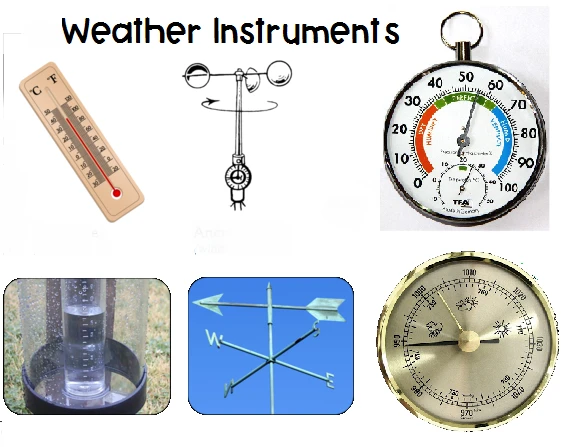Weather Instruments: Tools for Measuring Atmospheric Conditions

# Weather Instruments: Tools for Measuring Atmospheric Conditions
## Introduction to Weather Instruments
Weather instruments are essential tools used by meteorologists, scientists, and weather enthusiasts to measure various atmospheric conditions. These devices help us understand and predict weather patterns, which is crucial for agriculture, aviation, marine navigation, and daily life planning.
## Common Weather Instruments and Their Functions
### Thermometer
The thermometer is perhaps the most familiar weather instrument. It measures air temperature, typically in degrees Celsius or Fahrenheit. Modern thermometers often use digital sensors, while traditional ones use mercury or alcohol in glass tubes.
### Barometer
A barometer measures atmospheric pressure, which is a key indicator of weather changes. Falling pressure often indicates approaching storms, while rising pressure suggests fair weather. There are two main types: mercury barometers and aneroid barometers.
### Hygrometer
This instrument measures humidity – the amount of water vapor in the air. Hygrometers are important for predicting fog, precipitation, and understanding human comfort levels. Modern electronic hygrometers use capacitive or resistive sensors.
### Anemometer
Anemometers measure wind speed. The most common type has three or four cups that rotate with the wind, with the rotation speed converted to wind speed. Other types include hot-wire anemometers and sonic anemometers.
### Wind Vane
Also known as a weather vane, this instrument shows wind direction. It typically has an arrow that points into the wind, indicating the direction from which the wind is blowing.
### Rain Gauge
Rain gauges measure precipitation amounts over a set period. Simple versions are cylindrical containers that collect rainfall, while more sophisticated tipping bucket rain gauges can record rainfall intensity.
## Advanced Weather Measurement Tools
### Weather Balloons
These carry instrument packages called radiosondes high into the atmosphere to measure temperature, humidity, pressure, and wind at various altitudes. The data helps create weather forecasts and study atmospheric conditions.
### Weather Radar
Radar systems detect precipitation, its motion, and intensity. Doppler radar can also detect wind speed and direction, making it invaluable for severe weather warnings.
### Weather Satellites
Orbiting satellites provide a global view of weather patterns, cloud cover, sea surface temperatures, and other atmospheric phenomena. They’re crucial for tracking large-scale weather systems like hurricanes.
## Importance of Weather Instruments
Accurate weather measurements are vital for:
– Severe weather warnings that save lives
– Agricultural planning and crop management
– Aviation safety and route planning
– Climate change research and monitoring
– Energy production and consumption planning
## Maintaining Weather Instruments
For accurate measurements, weather instruments require:
– Regular calibration against known standards
– Proper siting away from obstructions
– Protection from extreme conditions
– Routine cleaning and maintenance
## The Future of Weather Instruments
Technological advancements continue to improve weather instruments:
– Miniaturization allows for more portable devices
– Wireless connectivity enables real-time data sharing
– Improved sensors provide greater accuracy
– Integration with smart home systems for personal weather monitoring
Understanding and using weather instruments properly helps us make informed decisions based on atmospheric conditions, contributing to safety, efficiency, and scientific progress in our daily lives.
Keyword: instruments of the weather